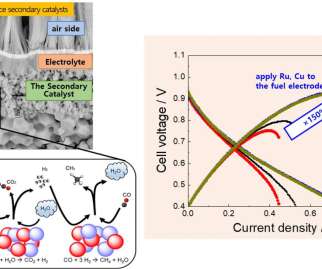LLNL 3-D printed biocatalytic polymer turns methane to methanol at room temperature and pressure
Green Car Congress
JUNE 15, 2016
Methane monooxygenases (MMOs), found in methanotrophic bacteria, are selective catalysts for methane activation and conversion to methanol under mild conditions; however, these enzymes are not amenable to standard enzyme immobilization approaches. The enzymes retain up to 100% activity in the polymer construct.































Let's personalize your content